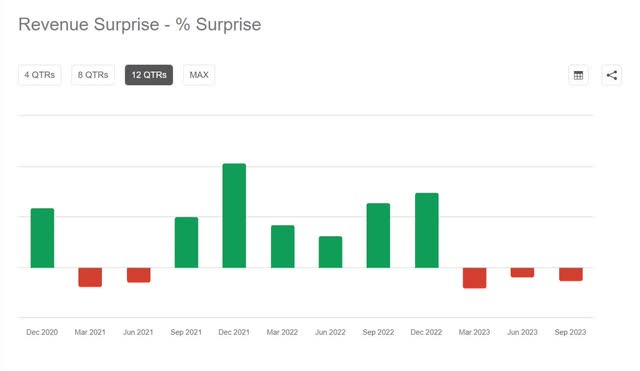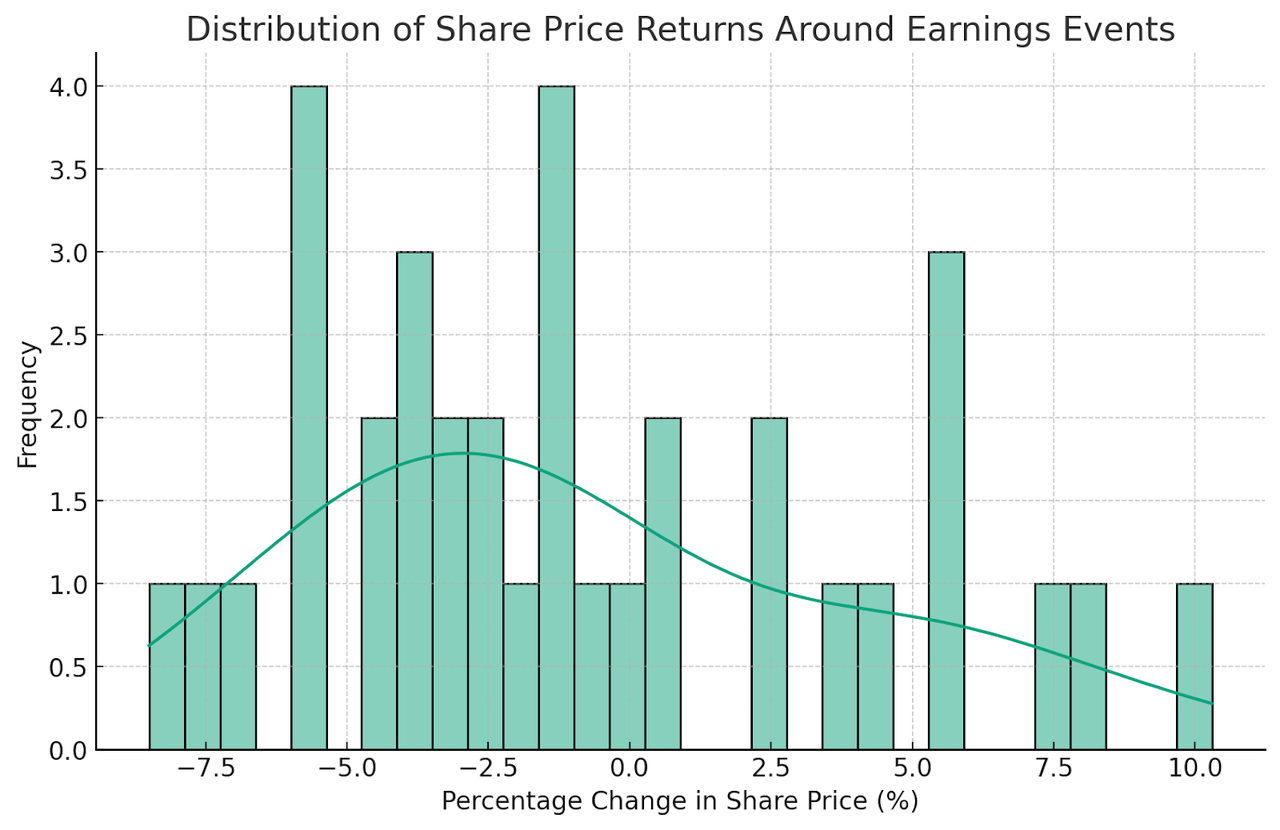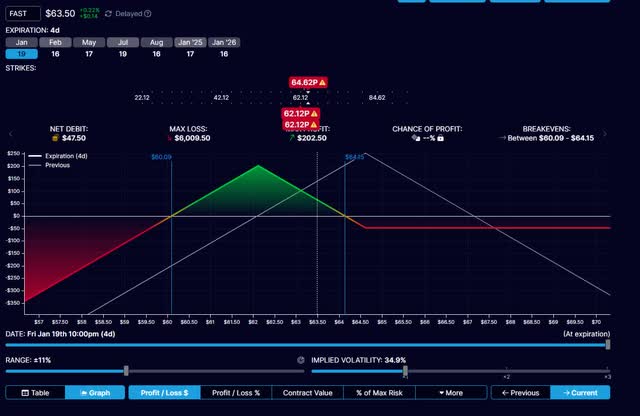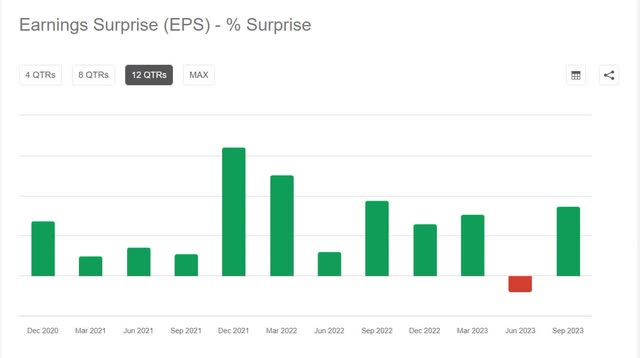Stefonlinton/iStock Editorial via Getty Images
Fastenal (NASDAQ:FAST) is set to announce its earnings on 1/18/2024 before the market opens. The consensus among analysts predicts an EPS of $0.52. In this article, I will get into analysts’ expectations, my own EPS forecast, and explore potential strategies to capitalize on this earnings announcement.
Typically, Fastenal, like many corporations, outperforms analyst expectations, often reporting higher-than-anticipated earnings per share:
Fastenal beat earnings last quarter, missed the quarter before. Before that it had a long string of hitting estimates of at least ten quarters. One interesting observation is that CFO Holden Lewis joined Fastenal and was actually a Wall Street analyst before that. With that background he’s likely quite adept at guiding analysts towards beatable projections.
Revenue surprises (Seeking Alpha)
Revenue is always more complex and the company is less consistently meeting estimates there. My take is that this is due to the limited scope for accounting discretion here.
Overall, Fastenal’s actual Earnings Per Share (EPS) exceeded the forecasted EPS approximately 76.19% of the time. Overall, Fastenal’s revenue exceeded the forecasted revenue approximately 33.33% of the time. EPS has been beaten less often and revenue more often under the current CFO. This contradicts my expectation that a former analyst would make it easier for the company to beat.
Another aspect I monitor is insider selling. Insider buying in 2022 has turned into selling in 2023. I’m not going to call it dumping and the overall trend for insiders is to sell shares.
Given Fastenal’s recent sound history of earnings and revenue surprises I could easily put the likelihood of the company surpassing EPS above 70%.
The range of analyst estimates for EPS varies only marginally (which is quite unusual), with the lowest at $0.43 and the highest at $0.46. With 12 analysts, the figure is incredibly tight. It seems the near-term performance of the business is quite predictable.
However, this quarter tends to be a weak quarter in both revenue and EPS and I’ve adjusted for that. This could be because of the many holidays industrial customers go through fewer fasteners. Ultimately, I get to an EPS estimate that’s well above Wall Street estimates and a revenue estimate that’s slightly above as well. A double beat doesn’t happen very often. However, my revenue figure is only marginally above the consensus.
| FQ4 2023 | EPS estimate per share $ | Revenue estimate ($ billions) |
| Wall Street Analysts | 0.45 | 1.75 |
| Bram de Haas | 0.49 | 1.758 |
I’ve been developing my own estimates using a blend of different models, including time series analysis, incorporating existing analyst forecasts, and other elements.
What’s crucial, however, is not just forecasting the right numbers, but how Fastenal’s stock price will respond to the earnings report and identifying other profitable opportunities arising from this event.
Here is a table illustrating the subsequent stock price movements on Fastenal earnings events:
distribution of share price returns (author)
Over decades of earnings data, Fastenal’s stock typically experiences a decline, on average ~0.8%, post-earnings announcements.
Here is the average return for each category of earnings events, presented in a table:
| Category | Average Return (%) |
|---|---|
| Earnings Beat + Revenue Miss | -1.67% |
| Earnings Miss + Revenue Beat | 3.41% |
| Beat Both | 1.40% |
| Miss Both | -3.77% |
Take the responses with a grain of salt because it is peculiar to me that the data returns a greater share price response to an earnings miss and revenue beat than it does to the company beating on both metrics. This could be due to sample size, or perhaps the company is more likely to beat on both when analysts’ expectations are particularly pessimistic because the economy is in the gutter. Not the environment traders will pounce on an industrial.
I’ve considered different trade ideas that might fit my expectations for the Fastenal earnings event. Especially because, on average, I expect it to decline somewhat. At the same time, the stock has been strong recently which offsets my conviction on that expected decline. What seems to fit the bill is to buy an at-the-money for the January 19 expiration at $64.62 and sell two out-of-the-money puts at $62.12.
option payoff profile FAST (Optionstrat.com)
If the price remains under $64.15 and above $60.09, this should be profitable according to the payoff profile. That gives the stock 5% room to drop before it becomes an unprofitable setup. It is a risky trade because, in the end, I’m net short a put. The maximum loss for the position is $6009.50 because the stock could theoretically go to zero. Be very careful with such trades. Conversely, the position also becomes unprofitable if the stock appreciates by more than ~1%. In that case, the risk is around $47.50 per contract. The max upside is $202.50. If I owned the stock I might consider selling short-term covered calls on part of my position.




